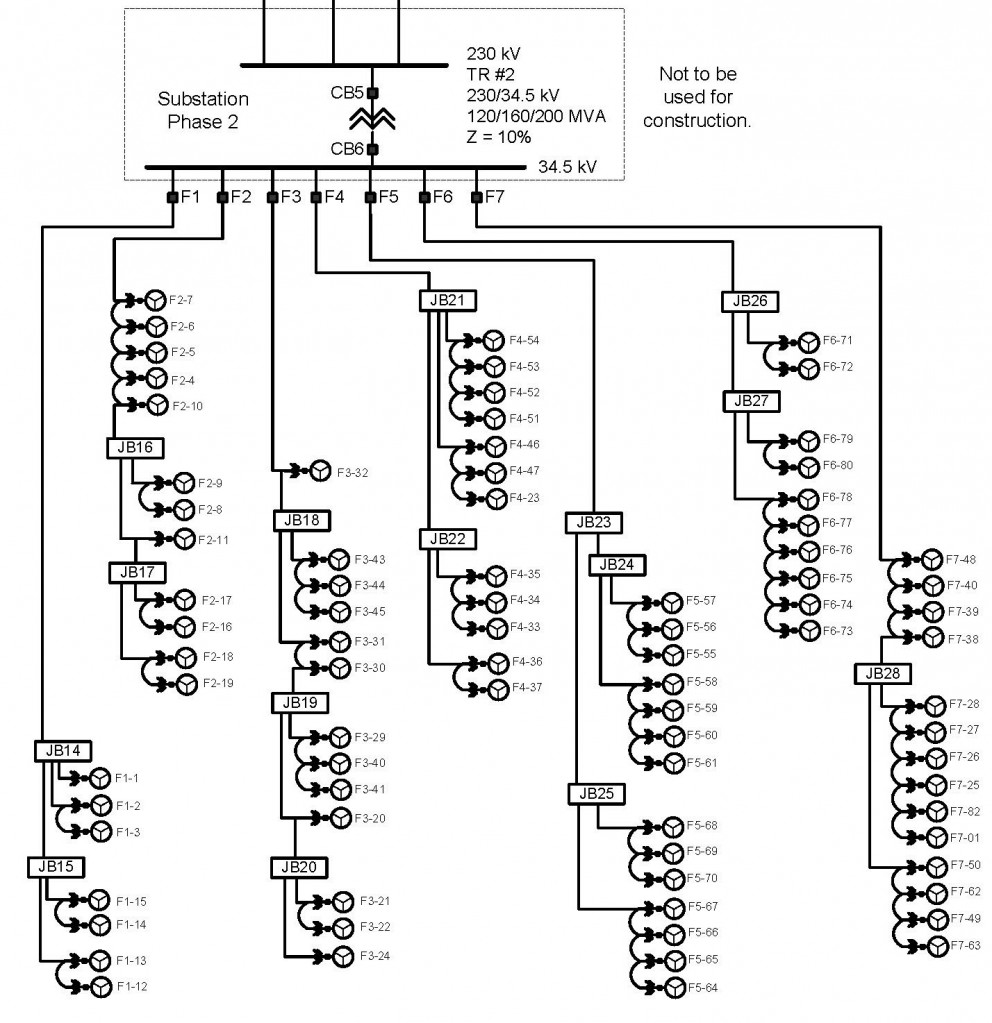In various Blogs on this site, we have talked about unique technical issues associated with integrating wind farms into existing grids. This Blog now addresses the matter of transient overvoltages, or TOV, specifically with respect to potential risks to customers and any required mitigation associated with wind farms installations.
About TOV
TOV impacts all electrical equipment through the risk of failure of insulation due to high voltage or melting of conductors due to high currents. The susceptibility to failure events varies by equipment, and it is possible to “harden” equipment against TOV by providing additional material at the associated cost. Among customer loads, semiconductors are the most sensitive to TOV and if unprotected, even small amounts of TOV can damage computers, TV sets, and most things electronic inside the house or commercial establishments.
TOV is not new or unknown to existing electrical grids, whether at transmission or distribution level. The most common form is caused by lightning strikes on overhead conductors. Lightning strikes are fast, with an average rising front of 1.2 micro-seconds, and most electrical equipment, by virtue of years of exposure, are designed to either withstand or are protected against them. Surge or lightning arresters are provided at critical locations on an electrical grid to mitigate the potential damage from lightning strikes; and circuit breakers will detect faults and clear them within a few cycles (on the order of 100,000 micro-seconds). For wind farms, the various equipment are specified by industry standards with sufficient withstand capability and protection against lightning strikes.
A lower frequency TOV may come about from voltage surges that enter the electric supply system following faults, switching and load rejection. The TOV from these events may not be large enough to trigger lightning arresters but may be of sufficient magnitude and duration to damage electrical equipment. Such types TOV are the subject of this Blog.
The following characteristics of wind farms can lead to exposure risks to TOV:
- The collector network has inductive and capacitive components that introduce TOV when energized or deenergized, or when faults occur on the network
- The wind turbines are inductive generators that may introduce TOV when starting up or energized
- The wind farm may be equipped with capacitor banks for steady-state voltage control whose switching may lead to TOV
Some grid operators have taken to requiring TOV studies for new wind farms interconnecting to their grids in recognition of the potential risks of TOV.
The following case study illustrates the types of tests and analysis that may be involved in a TOV study.
A Case Study
Our case study is based on a 100 MW wind farm that is proposing to interconnect at 115 kV to an existing transmission grid. The interconnection point is not voltage stiff (another way of saying this is that it has low short circuit levels), and hence is inclined to let voltages drift a bit before any sort of reactive power control can be provided by the grid.
The wind farm’s design involves a 34.5 kV collector system that connects all 56 wind turbines to the main substation where voltage is stepped up to the 115 kV level. At the 34.5 kV bus, there are three 3.6 MVAr capacitor banks to provide steady-state voltage support at various operating levels of the wind farm. (The need for and design of the capacitor banks were defined in a separate study).
A sample wind farm schematic is shown below. (This is for a different wind farm than the one used in the case study.)

The wind farm was modeled in commercial software for simulating electromagnetic transients, PSCAD, from the Manitoba HVDC Research Centre, and the following tests were specified:
- Energization, when a collector circuit is energized from the substation, or when the whole collector system is energized from the 115 kV grid
- De-energization, when the whole collector system is switched off from the main circuit breaker
- Switching of the capacitor banks
- Load rejection, when a collector feeder breaker opens while the connected wind turbines are at full output
- Various faults, primarily single-line (“SLG”) and three-phase (“3θ”) short circuits
When energizing the wind farm, voltages rise by up to 80%. The maximum transient overvoltage is about 2.6 p.u. crest (per unit of the maximum instantaneous voltage). See plot of PSCAD simulation below. With lighting arresters, the maximum voltage is reduced by about 21% to around 2.1 p.u.

When the wind farm is de-energized, there is an overvoltage of up to 2.0 p.u. crest on certain locations in the 34.5 kV collector system.
The maximum voltage when energizing one capacitor bank is about 2.0 p.u crest occurring when the first bank is switched in. This simulation assumes that the bank is connected wye grounded and there is no pre-insertion resistor. A pre-insertion resistor is expected to reduce the maximum switching overvoltage by 0.3-0.5 p.u. The capacitor energization inrush current is about 6.3 kAmps at about 10 kHz. Energizing the second and third banks, i.e., back-to-back switching, results in inrush currents of up to 13 kAmps. These levels of inrush current are within the capacitor switchers’ withstand capability. When de-energizing the capacitor bank, restrike by the capacitor switch results in overvoltage of 1.7 p.u. For the load rejection tests, the maximum overvoltage is 2.1 p.u.
The highest overvoltage observed for the SLG and 3θ fault tests is about 3.0 p.u. for for a Phase A to ground on the 34.5kV collector bus, cleared in 9 cycles. See figure below.

Overall, the maximum level of TOV of 3.0 p.u. are within the basic switching impulse levels (BIL) for the main transformer rated 5.9 p.u., the GSU transformers rated 4.4 p.u. and capacitor switch rated 7.1 p.u. However, the grid owner must then use this information to determine if the potential TOV impacts to their customers supplied on the same grid are within acceptable levels.
Conclusions
Because of the nature of wind and solar farms, there is a potential risk of transient overvoltages when integrated with existing grids. The risk is in addition to traditional sources of TOV such as lightning strikes. The magnitude, frequency and duration of TOV may be evaluated using computer simulation for electromagnetic transients, also known as EMTP, such as the commercial package, PSCAD. The TOV may be present in the collector system of the farm or may be introduced into the grid from the farm.
